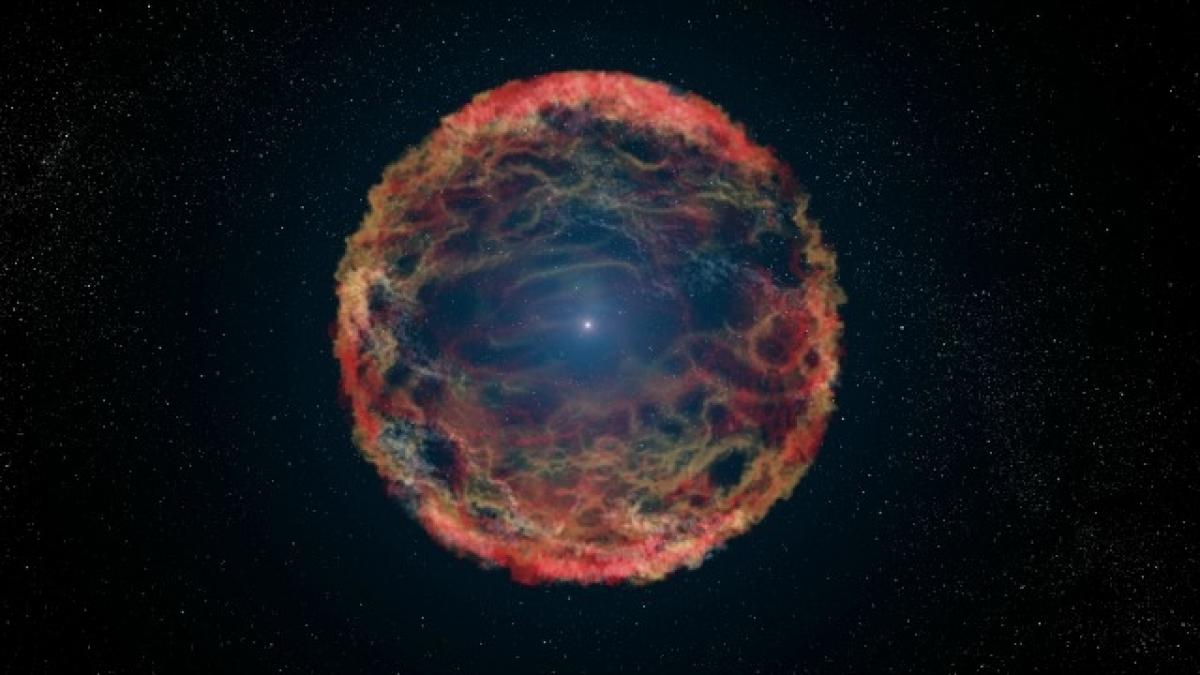Live
- Only 9.83 pc candidates are women in NE states
- YSRCP Bheemili MLA candidate visits various wards
- 37 in fray for three seats in 1st phase, Cooch Behar gets maximum security
- Jhansi meets people during her morning walk
- World Liver Day 2024: Theme, History, and Significance
- Google Pixel 9 Rumoured AI Features: Magic Composer, Autofill Smart Reply, and More
- Malladi Vishnu complains to EC on Naidu, Ayyanna & Pawan
- MyVoice: Views of our readers 19th April 2024
- Peddireddi touched my feet for DCC post, recalls Kiran
- All politicos must commit to free press
Just In

A low-mass supernova triggered the formation of our solar system about 4.6 billion years ago, researchers including one of Indian origin have found.
A low-mass supernova triggered the formation of our solar system about 4.6 billion years ago, researchers including one of Indian origin have found.
About 4.6 billion years ago, a cloud of gas and dust that eventually formed our solar system was disturbed. The ensuing gravitational collapse formed the proto-Sun with a surrounding disc where the planets were born, researchers said.
A supernova - a star exploding at the end of its life-cycle - would have enough energy to compress such a gas cloud.
Yet there was no conclusive evidence to support this theory. In addition, the nature of the triggering supernova remained elusive.
Professor Yong-Zhong Qian at the University of Minnesota in the US and his collaborators focused on short-lived nuclei present in the early solar system.
Due to their short lifetimes, these nuclei could only have come from the triggering supernova.
Their abundances in the early solar system have been inferred from their decay products in meteorites. As the debris from the formation of the solar system, meteorites are comparable to the leftover bricks and mortar in a construction site.
They tell us what the solar system is made of and in particular, what short-lived nuclei the triggering supernova provided, researchers said.
"This is the forensic evidence we need to help us explain how the solar system was formed. It points to a low-mass supernova as the trigger," Qian said.
Qian and Projjwal Banerjee, postdoctoral research associate at the University of Minnesota, realised that previous efforts in studying the formation of the solar system were focused on a high-mass supernova trigger, which would have left behind a set of nuclear fingerprints that are not present in the meteoric record.
Researchers decided to test whether a low-mass supernova, about 12 times heavier than our Sun, could explain the meteoritic record.
They examined Beryllium-10, a short-lived nucleus that has 4 protons and 6 neutrons, weighing 10 mass units. This nucleus is widely distributed in meteorites.
In fact, the ubiquity of Beryllium-10 was something of a mystery in and of itself, researchers said.
Many researchers had theorised that spallation - a process where high-energy particles strip away protons or neutrons from a nucleus to form new nuclei - by cosmic rays was responsible for the Beryllium-10 found in meteorites.
Qian said that this hypothesis involves many uncertain inputs and presumes that Beryllium-10 cannot be made in supernovae.
Using new models of supernovae, the researchers have shown that Beryllium-10 can be produced by neutrino spallation in supernovae of both low and high masses. However, only a low-mass supernova triggering the formation of the solar system is consistent with the overall meteoritic record.

© 2024 Hyderabad Media House Limited/The Hans India. All rights reserved. Powered by hocalwire.com







